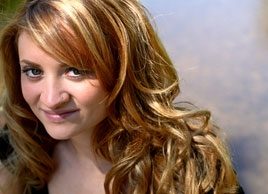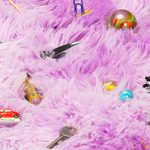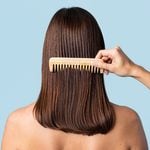Hair health: Get your healthiest hair ever
Can products or diet really make your hair smoother and shinier? Learn how to make your hair as healthy as possible

Source: Best Health Magazine, October 2008
Once dismissed as a trivial pursuit, hair research has been burgeoning over the past 15 years, resulting in increased understanding about the complex biology and chemistry of human hair. ‘Hair is now recognized as an important mini-organ system that gives all sorts of indications of health,’ says Dr. Jerry Shapiro, clinical research director of the hair research laboratory at the University of British Columbia’s department of dermatology and skin science.
Best Health gets to, well, the ‘root’ of what goes into the many thousands of strands of hair on your head, and what you can do to make them as glossy and healthy as possible.
How your hair grows
The hair bulb deep in the follicle creates new hair cells at the growth rate of about half an inch (1 cm) per month. ‘Hair cells divide rapidly’they are second only to bone marrow as the body’s most rapidly dividing cells’so they reflect metabolic processes,’ says Shapiro.
Each of us has from 100,000 to 150,000 hair follicles on our scalp. They have a three-stage cycle of growth, rest and shedding that lasts between two and five years. If your hair never gets longer than your shoulders, its growth cycle is most likely shorter than three years’and you can blame your genes.
Hair is made of nature’s toughest protein, keratin, which is also found in hooves, horns and feathers. Cells generated in the follicle rapidly die as they are pushed up to the scalp by newly created cells below. The shaft emerging from the scalp consists of keratin from the dying cells.
The keratin layers on the outside of the shaft create a shingle-like protective coat called the cuticle. This is covered with a protective fatty lipid layer’the f-layer’which gives natural hair its shine and water-repellent properties.
What can go wrong with your hair’s health
Dull, lifeless, brittle and damaged hair can be the result of three things: your health, your habits and your genes. You can’t do anything about your genes, but you can about the rest.
‘One of the most important first steps to healthy hair is to eat a healthy, well-balanced diet,’ notes Shapiro. Vitamin B and zinc deficiency, although rare, can undermine hair strength, thickness and gloss. And iron deficiency, such as through anemia, is one of the most common preventable causes of weak or thinning hair. These dietary improvements could benefit the health of your hair in about six months, says Shapiro.
However, ‘most hair damage is because of chemicals and heat,‘ notes Dr. John Gray, a U.K.-based physician, author and expert in hair science who is also a consultant to P&G Beauty, a leading hair-care product manufacturer. Both of these assault the cuticle and strip the f-layer. Here’s how: Hot hair dryers on wet hair can actually boil the moisture under the cuticle, causing blistering in the cortex and lifting of the cuticle. The chemicals in bleaches, colourants, perms, relaxants and even swimming pools can strip the f-layer, lift the shingle-like ridges of the protective cuticle and weaken the hair shaft, promoting dryness and ultimately breakage.
Just as the fabric of your favourite jeans get frayed with wear over time, all of this damage creates a rough surface on the hair shaft, and can even cause splits at the ends or in the middle. These shafts catch on each other, rather than slipping past, so they’re more apt to tangle, break and feel dry. Rough shafts also scatter light rather than reflect it back, making hair dull, says Gray. Moreover, rough hair carries a negative electrical charge so the hairs, like tiny magnets, repel each other’resulting in static frizz and fly-away hair.
How to reverse damage to your hair
Over the centuries, techniques to smooth roughness and make hairs slip against each other have included everything from olive oil in classical Greece to fats, waxes, proteins and, more recently, silicone. But the problem with these traditional ingredients is that they tend to condition only the healthy parts of the hair while failing to penetrate the most damaged sections, often leaving hair oily and weighed down.
The really new science is moving away from the traditional oil-based methods’instead, it is altering hair’s electrical charge. Neutralizing the negative charge can smooth the shaft without making hair heavy, limp or oily, and is a key concept behind breakthroughs in shampoos and conditioners over the past decade.
Companies carefully guard their formulas, but we do know that two main types of targeted conditioning ingredients can be added to shampoos or conditioners. They work individually or in combination to mimic the stripped f-layer, smooth the roughened cuticle and neutralize hair’s negative charges without adding heavy oils.
These two ingredient types are silicone derivatives and cationic polymers (which are any kind of long molecules with a positive charge). Amino silicones and positively charged silicone derivatives, such as bis-aminopropyl dimethicone, selectively deposit tiny particles into the lifted cuticle, improving smoothness and reflectivity. Guar gum derivatives and other cationic polymers’with mouthful names like guar hydroxypropyltrimonium chloride and polyquaternium’neutralize the negative charge. Positively charged particles also home in on where the negative charge’i.e., damage’is greatest, such as at hair ends, unlike the oil- and fat-based ingredients of the past, which coated the shaft but did not interact as well with hair’s damaged spots. (On the bottle’s ingredient list, names with an ‘ium’ ending are positively charged ingredients.)
‘It’s an incredibly complex and selective science, but working with the electrical charge can improve volume and smoothness, and make hair more manageable,’ says Gray.
Of course, to pick a formulation for your own needs, look for descriptions of the outcome you want: sleek hair, volume, damage repair. But understand that, if you have damaged hair, nothing except having it cut off will be a permanent fix. Formulations are designed to last only until the next wash.




